- Chateau Lascaux Carra Pic Saint Loup Rouge (France), $25
- Chateau la Croix Montlabert, $37
- Lamblin & Fils 2023 AC Chablis, $23
- Dom de la Villaudreau, Sancerre Rouge, $28
- Jolie-Laide ’23 Glou d’Etat, $30
- Capanna Sangiovese Bianco, $30
Not a member? Click to join our “Classic Selections” Wine Club!
———————– (3-bottle Option) ———————–
1. Chateau Lascaux ‘Carra’ Pic Saint Loup Rouge (France), $25
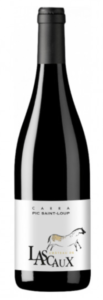
The Wine
The word Carra is the pre-Roman origin of the word garrigue. This cuvee is a tribute to the calcareous stone of the terroir that lends typicity to this wine, which has a mineral note as the bass note in its symphony of flavors.
The wine is a classic “GSM” blend typical to the south of France. But here, Syrah takes the lead with 60% of the blend, followed by Grenache with 30% and Mourvedre at 10%. After harvest, the wine undergoes 3-4 months of skin contact / fermentation and then aging – all in concrete tanks with no oak contact prior to bottling. The wine shows a deep red/purple hue and a nose that boasts scents of licorice, sweet tar and black fruits. On the palate you’ll find red fruits, blackberries, blackcurrant, black olive and a classic, peppery finish.
Drink now through 2030. Ideal serving temperate is 59 – 60 Farenheit. Classic pairings include Provencal vegetables, lamb tagine, rack of lamb with rosemary, tapas and a nice cheese assortment.
The Winery
Chateau de Lascaux has its origins with the Cavalier family who started with 48 acres of vines when they took over in 1984, The Chateau has since grown to its present size of almost 204 acres of biodynamic vineyards surrounded by 720 acres of garrigue scrub.
The vineyards are farmed biodynamically and integrated into a natural environment of incredibly rich biodiversity, providing it with both protection and biodiversity. All of these factors contribute to the characteristics for which Château de Lascaux has become known as a reference point for wines from Pic Saint Loup and Languedoc.
The vineyard sites, wild and sometimes austere, lead to wines that express the dried-herb characteristic of the region’s garrigue, the low-growing scrub brush and herbs whose pollen settles on the grapes and adds a flavor to the wine that is a characteristi of red wines from the South of France.
2. Chateau la Croix Montlabert, St Emilion Gr Cru, $37
The Wine
Utilizing 100% HVE and Terra Vitis practices tailored to each plot, the approach enhances soil life with nutrient-rich plant covers that are then mowed and or tilled for something called “Green Manure”. Vineyard techniques also include Double Guyot pruning and manual green harvesting to reduce crop yield and increase the intensity of the remaining fruit.
Each wine is individually vinified in collaboration with the de Boüard team, employing various techniques including piégeage, délestage, and remontage. Post-fermentation extraction under marc lasts for 7 days, ensuring rounded, fine, long, and silky tannins while maintaining structure. Malolactic fermentation occurs in vats. Aged for 14 months, using a mix of one-wine barrels, two-wine barrels, and vats, with toasting levels varied by five coopers (medium to hot).
The Winery
This is the second label for the Grand Cru Classe Château Montlabert. This wine follows the same growing and winemaking practices as the Grand Cru Classé from a parcel bought in 2017 which spans almost 20 acres.
Inextricably linked with the UNESCO World Heritage site, Saint Emilion vineyards, Chateau Montlabert shares the Saint-Emilion Grand Cru appellation with several of its pedigreed neighbors – Cheval Blanc, Clos des Jacobins and Château Figeac are just a stone’s throw away. When buying Bourdeaux from St-Emilion you’ll find a wiiiiide range of quality; that ‘Grand Cru’ designation is a wise starting point for one’s limited wine budget – a reliable guide to quality for those who know.
3. Lamblin & Fils 2023 Bourgogne Blanc, $23
The Wine
This Chardonnay (100%) is from the Chablis region and it’s one of the wines I think of when Spring’s seasonal foods hit the market. It has a mineral-laden backbone and a wonderful blend of linear crispness balanced by an almost sweet, yeasty creaminess which pairs well with the early output from Spring gardens.
The wine delivers Chablis’ much sought-after minerality from its vineyard soils, which originated back in the Jurassic era – Kimmeridgian soils flecked with tiny oyster shells from 150 million years ago. You know, give or take a few centuries.
At harvest, this wine began with meticulous sorting prior to fermenting and aging in temperature-controlled stainless steel tanks. Malolactic fermentation occurred naturally, followed by cold storage in isothermal tank to promote the precipitation of tartaric acid, leaving the wine clear and free from tartrates that can form over time. Light filtration occurred to clarify the wine.
Tasting Notes: Golden color with bright reflections. On the nose you’ll find beautiful aromas of white flowers mixed with fine and delicate citrus fruit blending with hints of ripe tropical fruit notes. On the palate, the fruit dominates but is beautifully supported by the underlying mineral notes mentioned above. Drink now through 2027.
The Winery
Lamblin and Fils is one of the more prolific houses in Burgundy. A Chablis-based firm that has been family run for 300+ years, now under the capable guidance of Didier Lamblin and his brother Michel. For those familiar with the geography of Chablis, Lamblin is found on the northern edge of the village of Maligny, which is also the northernmost tip of the Kimmeridgian soils that give the region its distinctive flavor profile.
Think of Lamblin as a “hybrid” negociant because ~20% of Lamblin’s production comes from their own estate vineyards while the remainder is from partner growers. You’ll find tremendous value in this wine!
———————– (6-bottle Option, all of above, plus…) ———————–
4. Dom de la Villaudiere, Sancerre Rouge, $28
The Wine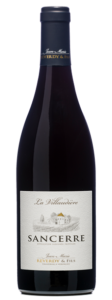
When I hear the word “Sancerre”, my mind jumps immediately to crisp white wines made from the Sauvignon Blanc grape – some would say it is the highest expression of the Sauvignon Blanc from anywhere in the world. But that leap ignores a small but lovely subset of pinot noir wines from the Sancerre region – and it makes sense, as the region is just a short drive away from the hills of Burgundy.
The grapes are from 40-year-old vines growing in a blend of two soils: 50% clay-limestone (‘Terres Blanches’) and 50% dry, rocky limestone (‘Caillottes’). These vineyards adhere to sustainable practices, including soil management, early bud thinning, and leaf removal in early July, to achieve low yields and full ripeness and flavor development. This meticulous approach yields wines with concentrated flavors, excellent aromas, ripe tannins, and a harmonious balance between fruit and acidity.
Deep and intense ruby color in the glass. The expressive nose reveals complex aromas – look for ripe red and blue fruits elevated by smoky notes of roasted coffee. On the palate, after a rather soft attack, the wine opens with beautiful volume, full of finesse and elegance leading into a long and pleasing finish.
This wine is 100% Pinot Noir and 100% delicious, a lot of wine for the money. Pair with roast poultry, duck confit, mushroom dishes (including pizza al Funghi/a la Champignon!) and dishes featuring lamb.
The Winery
The captivating Domaine de la Villaudiere is a family estate that has spanned multiple generations. It is now under the stewardship of the Reverdy family – Jean-Marie, his wife Catherine and their son Guillaume. Their youngest son, Baptiste, also plans to contribute to the family business once he completes his studies.
5. Jolie-Laide 2023 Glou d’Etat, $30
The Wine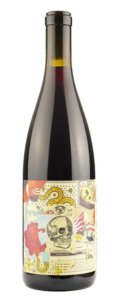
Coup d’Etat: A sudden and decisive change of government illegally or by force.
Glou d’Etat: A sudden and decisive change to the usual winemaking style that runs counter to tradition!
This wine marks a bit of a departure for Jolie-Laide, a unique blend of varieties from around California – 38% Valdiguie, 33% Mourvedre, 17% Grenache, 12% other (Cab Franc, Syrah, Carignan, Petite Verdot). This light red wine is fun and irreverent, inspired by quaffable European wines they describe as “Glou Glou”, which I translate as “a quaffable porch pounder”. Made using partial carbonic maceration (a technique that lifts the aromatics and dials up the high notes red fruits), before being foot-crushed and left to complete fermentation with some whole clusters. The result is a wine offering a lighter drinking style with fresh aromatics and a lower tannin profile. A wine that falls firmly in the “Chillable Reds” category.
One feature to note – the labels on Jolie-Laide wines change every year, featuring a different artist or art collective. “Our wines are a celebration of the year and seasons in which they are made, always unique and different, no two bottlings are ever the same.”
The Winery
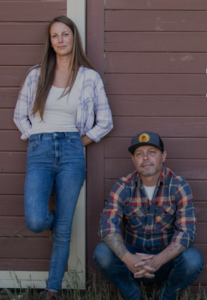
Jenny and Scott Schultz
The name Jolie-Laide translates loosely to “Pretty-Ugly”, a French term of endearment to describe something that is unconventionally beautiful. From their base in Sonoma County, owners Scott and Jenny Schultz work with a handful of growers to source fruit from carefully selected vineyards whose fruit is so well raised that the Shultz’s can maintain a hands-off approach in the cellar.
The winemaking method at Jolie-Laide is simple: grapes are left whole cluster, foot crushed (that’s their feet in the photo at the opening for this section) and aged in neutral oak. All ferments are done with native yeasts, and the only additions consist of a minimal dose of sulfur at bottling to prevent unwanted bacterial growth after release.
Their background – Jenny had a degree in chemistry when she went to UC Davis to study winemaking after a few wine appreciation classes led her to apply her chemical bent to the benefit of fermented juice.
Scott came into the winemaking world moving from Chicago to run the beverage program at Napa Valley’s Bouchon – a Thomas Keller restaurant. Through connections he made there he started working in wine production and eventually became Cellar Master at Realm Winery, followed by a stint with Arnot-Roberts, and then he joined Pax Mahle to work on the Pax and Wind Gap labels. Scott’s passion for winemaking inevitably led to his own project, Jolie-Laide, in 2010.
Scott and Jenny met a couple of years later at a winemaking facility where Scott was working when Jenny came in for a tasting. And as they say, the rest is history.
6. Capanna Sangiovese Bianco 2022, $30
The Wine
Known for their pricey (and well worth it!) Brunellos, Capanna also provides some interesting wines that show more of their creative side. This white wine from the red Sangiovese grape is one such product! One wonders what the discussion that went on inside the Cencioni household when this wine was suggested. I can only imagine it would start something like this:
“ARE YOU EFFING NUTS?! You want to use our Sangiovese grapes to make a low-cost WHITE wine??! We could use those grapes for a much higher-priced red wine – what are you thinking!?”
However it started, we know it ended with acquiescence, as this delicious white wine is testament to wines made from red wines, just without any skin contact.
As with most white wines made from red grapes, the wine expresses nice fruit notes with surprising hints of green apple, with an excellent mouth-watering crispness. Pairs nicely with starters, pasta or rice with vegetables, fish-based dishes and white meats.
The Winery
Capanna has been owned by the Cencioni family since 1957. It is located in the Montosoli area north of of the town of Montalcino, home to Tuscany’s famed Brunellos. Now quite prosperous – a place for the world’s wealthy to see and be seen – Montalcino was quite destitute after WWII – the collapse of Italy’s sharecropping system, the migration of young talent to urban centers and a new highway that bypassed Montalcino and left it bereft of outside traffic, all led to a medieval town that was spiraling into total collapse.
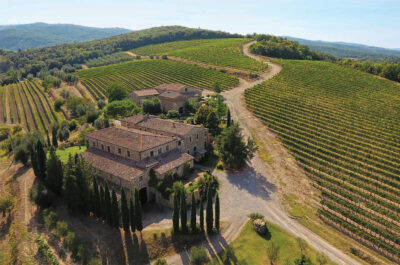
The Capanna estate in the hills just North of Montalcino.
It was within this context that one comes to appreciate the bold actions of Giuseppe Cencioni who, helped by his sons Benito and Franco, became one of the first farms of the modern period of Brunello. They started bottling their own wines in the 1960’s and after Brunello di Montalcino was granted DOC status in 1966, Giuseppe was one of the 25 founders of the Consorzio del Vino Brunello di Montalcino.
At first, production was only a few thousand bottles, but it steadily grew as the Cencionis planted new vineyards and by 1975 they’d began exporting their 19760 Brunello di Montalcino DOC to Germany. Additional foreign markets soon followed, including the US, Canada, Switzerland, Belgium, Holland, Japan, Austria, Poland, Denmark and others (today they export to about 20 countries).
Capanna is still a family-run operation in both the vineyards and the cellar. Today it is run by Amedeo Cencioni, Patrizio’s son and the fourth generation of the family to run Capanna.



